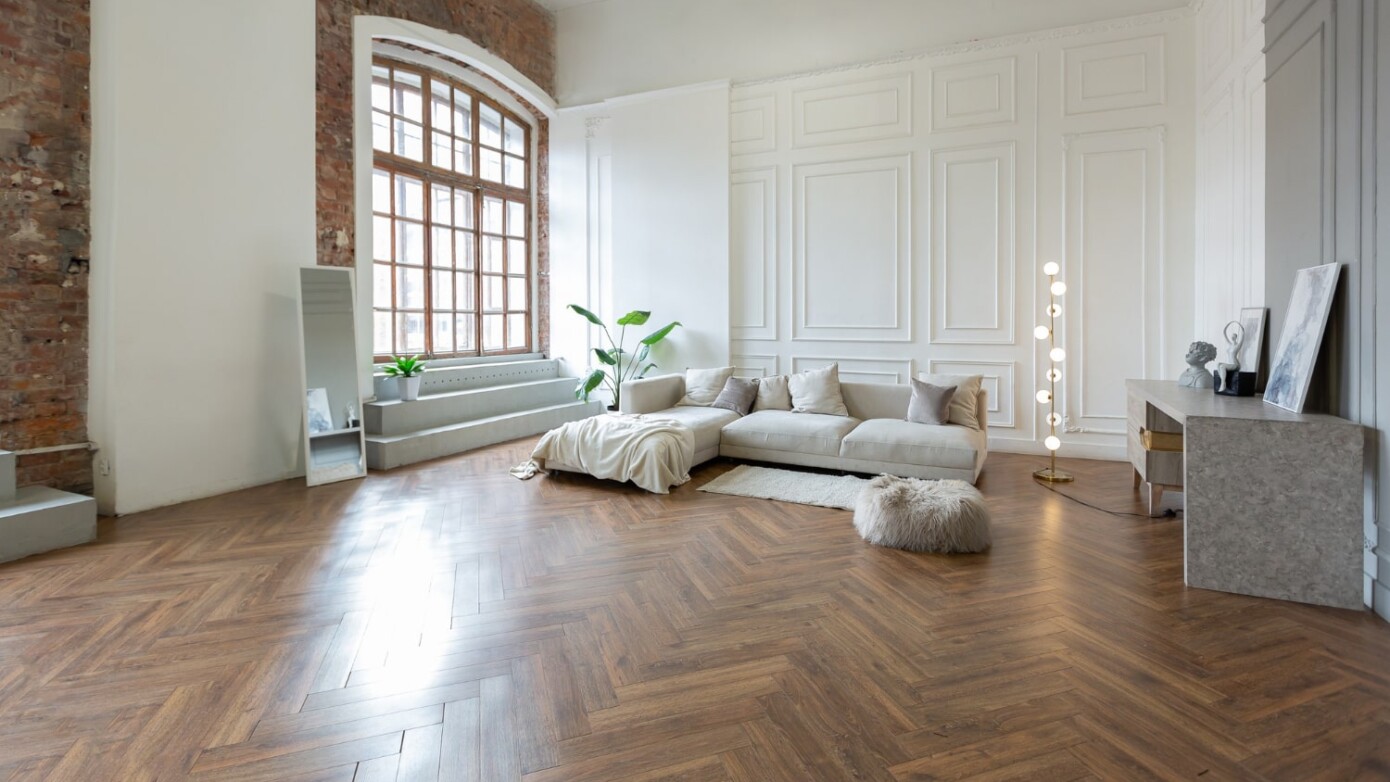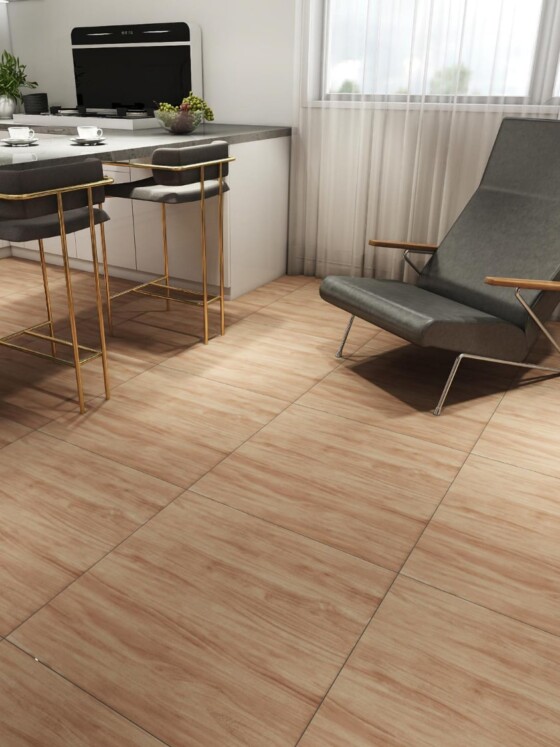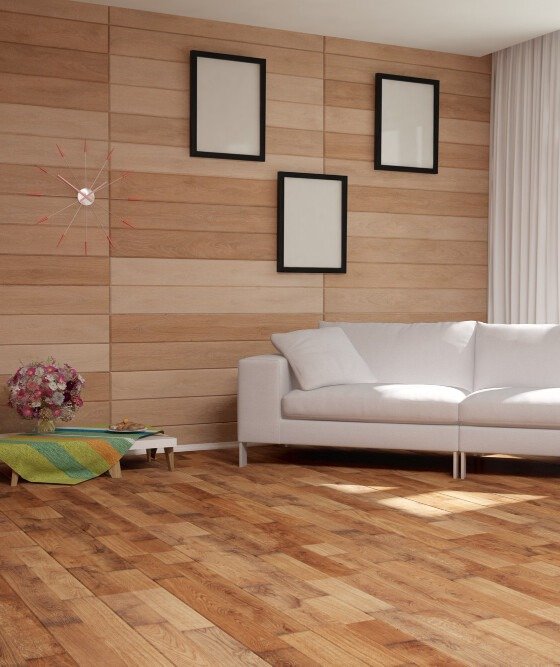If you’re seeking a flooring option that not only exudes timeless elegance but also complements your overall interior design, Engineered Herringbone flooring is here to steal the show. First created in the 1600s, the herringbone flooring design was created for buildings and roadways. Over time, it has grown in popularity across the globe and is used for a wide variety of interior and exterior uses. Due to its unique fishbone ‘V’ shape, it can be styled in many different environments. So no matter your home type, you can style it to suit your needs.
The combination of the herringbone pattern and the strength of engineered wood is popular among those interested in design. This article will guide you through selecting the appropriate wood type and finishes and provide tips on installing and maintaining the flooring. So get ready to explore the endless possibilities of herringbone-engineered wood flooring and how it can enhance the overall look of your home.
These are just a few examples of the differences between herringbone pattern flooring and other commonly used patterns. Each pattern offers its aesthetic appeal and can significantly impact a space’s overall look and feel.
What is Herringbone Pattern Flooring?
The herringbone pattern is a classic design with a distinctive zigzag arrangement of rectangular wood planks. This pattern is named after it resembles the skeleton of a herring fish. The planks are laid at 90-degree angles to create a series of V shapes, resulting in a strikingly visual effect that adds a touch of sophistication to any room. Herringbone Engineered Wood Flooring is a sophisticated and highly regarded flooring solution that seamlessly combines the timeless herringbone pattern with the durability and versatility of engineered wood. Composed of multiple layers of wood veneer bonded together, this type of flooring offers enhanced stability and resistance to moisture compared to traditional solid hardwood. Herringbone-engineered wood flooring has a zigzag pattern that adds depth to any space. It’s available in various finishes and colours and can be sanded and refinished multiple times for longevity. It’s perfect for those wanting to elevate their home’s elegance or create a statement piece in a commercial setting.Advantages of Engineered Herringbone Pattern Flooring
Timeless Elegance
The herringbone pattern is a classic design that brings timeless elegance to any room. It adds depth and character while instantly elevating the overall aesthetic. Its sophisticated and luxurious look creates a sense of style that’s hard to beat.Visual Interest
Herringbone flooring is known for its captivating zigzag pattern that adds visual interest to any room. It creates a dynamic element that enhances the ambience and complements various interior styles.Space Perception
Utilizing the herringbone pattern, with its diagonal arrangement, is a surefire way to create the illusion of more space and make any room look larger and more expansive. This technique is particularly advantageous for smaller areas where maximizing perceived space is paramount.Durability and Stability
Herringbone engineered wood flooring is a durable and strong option that combines the stability of engineered wood with the classic herringbone pattern. The multiple layers of engineered wood resist warping, while the top layer of hardwood adds longevity and endurance to the flooring.Easy Maintenance
Maintaining herringbone pattern flooring is quite simple. Regular sweeping or vacuuming can help remove dust and debris, while occasional damp mopping can ensure thorough cleaning. Moreover, the protective finishes applied to the top layer make the flooring resistant to stains and scratches, which can help prolong its lifespan.Herringbone Pattern Flooring Trends
In modern times, the demand for herringbone pattern flooring has experienced a significant surge due to its classic and elegant appeal. Homeowners are increasingly drawn to this style of flooring as it adds a touch of sophistication to any space. Notable trends in herringbone pattern flooring include wider planks for a more contemporary look and incorporating contrasting colours to create a unique and visually appealing design.- Wide Planks: The trend of using wider planks in herringbone pattern flooring has grown in popularity. The wider planks add a modern touch to the traditional pattern and give a more open and contemporary appearance.
- Mixed Wood Species: Mixing different wood species within the herringbone pattern adds a unique and eye-catching element to the flooring. Combining contrasting tones and grains can create a striking visual impact.
- Colour Variations: Although herringbone patterns are usually linked with natural wood tones, using more daring colours is becoming more popular. White-washed, grey, or black-stained herringbone floors can make a bold and contemporary statement.
Different Types of Herringbone Pattern Flooring
Parquet flooring is a type of flooring that is made up of small wood pieces arranged in geometric patterns or designs. One of the most popular patterns in the parquet category is the herringbone pattern, which is known for its distinctive qualities. Although there are various flooring patterns, the herringbone pattern is particularly noteworthy.Here are some key differences between herringbone pattern flooring and other popular patterns
Parquet flooring: Refers to intricate geometric patterns created with small wood pieces. It often includes squares, rectangles, and other shapes arranged to form repeating motifs. For example, herringbone can be considered a parquet pattern, but it specifically features the diagonal “V” shape created by rectangular tiles or planks. Chevron: It’s common for people to mix up herringbone and chevron patterns, but they’re quite different. A herringbone pattern involves rectangular tiles or planks arranged in a zigzag pattern to create a “V” shape, with each tile or plank perpendicular to the next. On the other hand, in a chevron pattern, the tiles or planks are also arranged in a zigzag pattern, but they form a continuous and symmetrical “V” shape, with the ends cut at an angle of around 45 degrees for a seamless flow Basketweave: Pattern flooring is created by arranging rectangular tiles or planks in a grid-like formation. The tiles are placed in pairs, one horizontally and one vertically, giving it a woven or basket-like look. Unlike herringbone patterns, the tiles in a basketweave pattern do not create a continuous diagonal line. Straight Lay: The tiles or planks are installed in a linear or parallel arrangement in a straight lay pattern. Each tile or plank is placed adjacent to the previous one straightforwardly. This pattern is simple and commonly used for its clean and uniform look. In contrast, herringbone pattern flooring adds visual interest and complexity with its diagonal arrangement.
Random Lay: Random lay, a modular or staggered pattern, involves installing tiles or planks with varying lengths and widths. The pieces are placed in a seemingly random order, creating a more organic and informal look. Herringbone follows a precise and structured pattern, each piece positioned at a specific angle.






Leave a Reply